Chilly weather greets Bison Range visitors
May 13, 2021
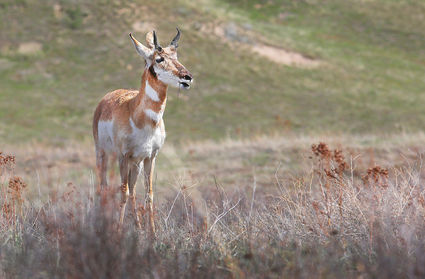
Ed Moreth
ALONE TIME – A pronghorn antelope browses for food near the intersection of Buffalo Prairie Drive and Red Sleep Drive at the Bison Range.
Thousands of animals, big and small, call the Bison Range home, but the biggest land mammal of North America is the refuge's biggest attraction - the bison, also known as the American buffalo - that numbers over 300 at the 18,700-acre refuge.
Saturday was the range's season opener when visitors could take a leisurely ride along Red Sleep Drive, a one way 19-mile gravel road that makes a giant loop around the Bison Range, called the National Bison Range before the Confederated Salish & Kootenai Tribe took over in January after the omnibus spending bill was signed by former President Donald Trump.
Officials on Saturday opened the Bison Range gates at 6 a.m. and the Visitors Center an hour later, although the exhibits and gift shop won't reopen until June. It was a chilly overcast day, with a few small patches of snow and some snow flurries at the higher elevations, where the temperature hovered around 35 degrees. Bison Range officials didn't have an accurate number of visitors for Saturday, but it was likely down from years past because of weather.
For the next five months, the area open to visitors will be more than tripled with the longer drive and three walking trails along Red Sleep Drive open. The mile long High Point Trail is situated at an elevation of 4,700 feet, nearly the highest point on the refuge, which had been part of the Glacial Lake Missoula, said Tom McDonald, the manager for the CSKT Division of Fish, Wildlife, Recreation and Conservation. McDonald said the Bison Range gets about 200,000 visitors a year, including people from all around the world.
Officials at the refuge estimate the bison herd to be around 325, which might be larger than normal because the U.S. Fish & Wildlife Service didn't conduct its annual bison roundup last year, which usually reduces the herd numbers with sales and donations. The CSKT and FWS are planning for this year's roundup, which the CSKT now calls a "bison capture operation," which is a procedure to manage the bison population size, assess the animals' health and collect genetic information, according to McDonald.
Stephanie Gillin, the CSKT's information and education specialist, said the baby red buffalo calves are already starting to appear. McDonald said bison continue to be the biggest draw at the refuge. "Bison are an iconic species, integral to Native cultures, representative of the once vast grassland ecosystems of the American West, formidable and resilient, rebounding from the brink of extinction," said McDonald.

Visitors might spot bison in small and large groups, along the road - sometimes in the road - and as dots in the distance. During most times of the year, cows and calves travel in groups of 30-40, according to McDonald, who added that bulls are often more solitary and can be found in groups of three to seven. However, he noted that during calving season it isn't unusual to see bison in larger herds and during breeding seasons the bison population mostly remains together. The oldest bison at the refuge is approximately 24 years old and the largest bull is about 2,000 pounds, according to McDonald.
The bison breeding season, also called the rut, starts in July and can run into September. The rut season can provide special shows for visitors. Bulls bellow, curl their lips, wallow in the dirt, strut their stuff to intimidate other bulls, and sometimes go to actual battle over the chance to mate with cows. People can get a close up look at a bison at the Visitors Center, where a 2,000-pound 8-year-old bull was mounted and is on display.
But bison aren't the only animal of interest at the Bison Range. Hundreds of whitetail and mule deer roam the refuge, which lies in Sanders and Lake counties on the Flathead Indian Reservation. The refuge staff doesn't keep track of every animal species, but McDonald said they have around 20 pronghorn antelope, 20 bighorn sheep, 150 elk, black bear, coyotes, mountain lions, wolves, bobcats, badgers, marmots, and ground squirrels. The refuge also has more than 200 species of birds. "The actual number of birds fluctuates seasonally. Birds use the range as a stopover, breeding and brood rearing grounds, winter or summer range, or as a year round residence," said McDonald. He added that the Bison Range is a good place for bird watching, particularly at Mission Creek and the nature trail.
Entry fees have changed since the CSKT took over the refuge. The cost for a daily pass was doubled to $10 a vehicle and $20 for an annual pass, $5 more than when under the federal government's jurisdiction. Although visitors in the past were not charged to gain access of the refuge's Buffalo Prairie Drive and West Loop during the winter months, as of Saturday, the Bison Range will require a daily or annual pass all year round. There is no charge for CSKT Tribal members, but because the refuge is no longer a USFWS facility, Gillin said they will no longer accept federal park issued passes, which include America the Beautiful or Golden Age passes. Gillin added that all proceeds go back into management and operation of the Bison Range.
The Visitors Center will be open seven days a week 7 a.m. to 8 p.m. "Over the next few months you will see a new look in signs and the remolding of the Visitors Center," said Gillin.



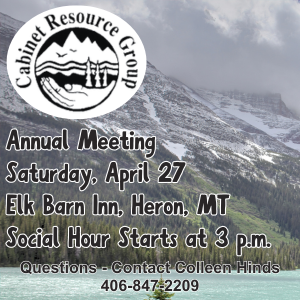
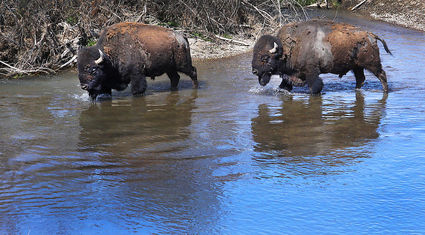
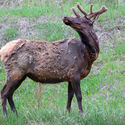
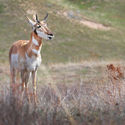
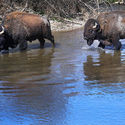
Reader Comments(0)